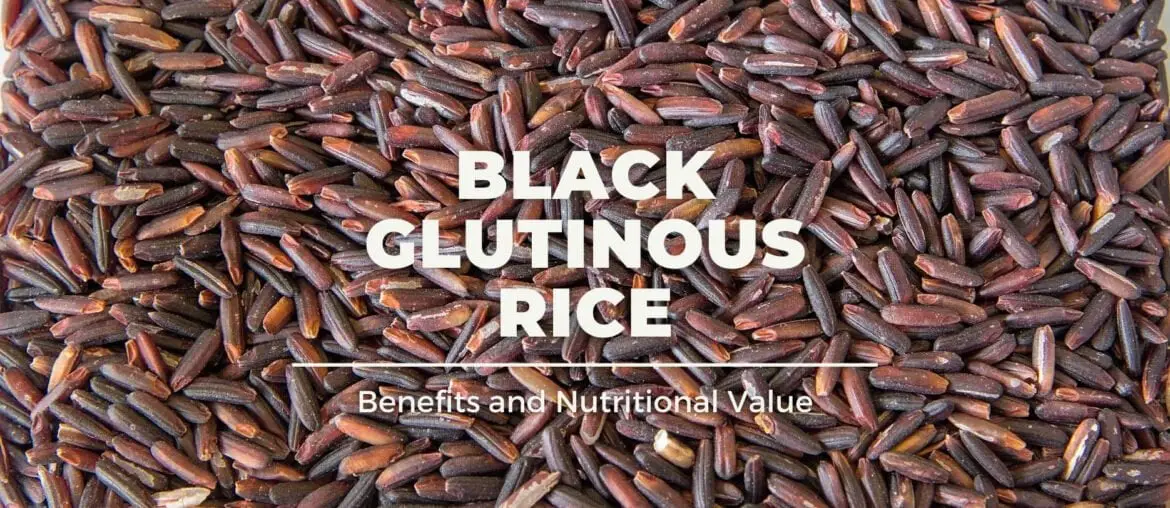Black glutinous rice is not just another kind of black rice. It contains a lot of essential nutrients for our bodies. Also, it has a lot of good health effects on our lives. It plays a unique role in healing the spleen, kidneys, and lung meridians.
It is good to eat black glutinous rice to conditioning the spleen and stomach in the summer. So let’s take a look at the functions and functions of black glutinous rice.
Is black rice the same as black glutinous rice
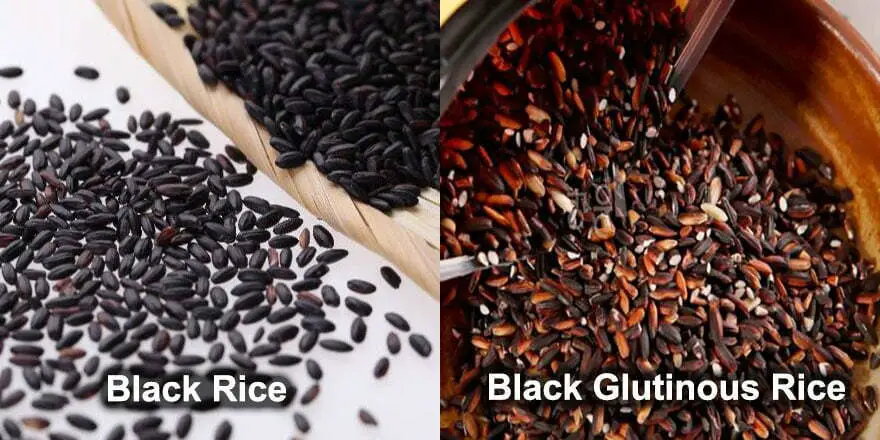
| Black Rice | Black Glutinous Rice |
|---|---|
| Black rice is pure black | Black glutinous rice is purple-red |
| Black rice is a kind of rice used for medicine and food | Black glutinous rice is a variety of purple rice. |
| Black rice has a pure black appearance, looks like black beads, and has a fine texture. It is also slightly flatter than ordinary rice. | Black glutinous rice is rice with a purple-red seed coat. Because of its waxy quality, it is also called blood glutinous rice. |
| Black rice is rich in nutrition, containing 18 kinds of amino acids, selenium, iron, zinc, calcium, manganese, molybdenum, and other elements and vitamins b1, b2, and b6. | In addition to protein, fat, and carbohydrates, black glutinous rice is also rich in calcium, phosphorus, iron, vitamin B1, and B2. |
Distinguishing between black glutinous rice, black rice, and purple rice is a common problem. These flavors are different, but the primary function is the same. No doubt, you will be embarrassed when buying this rice because of difficult to distinguish.
Next, we will distinguish between black glutinous rice, black rice, and purple rice.
How to identify black glutinous rice
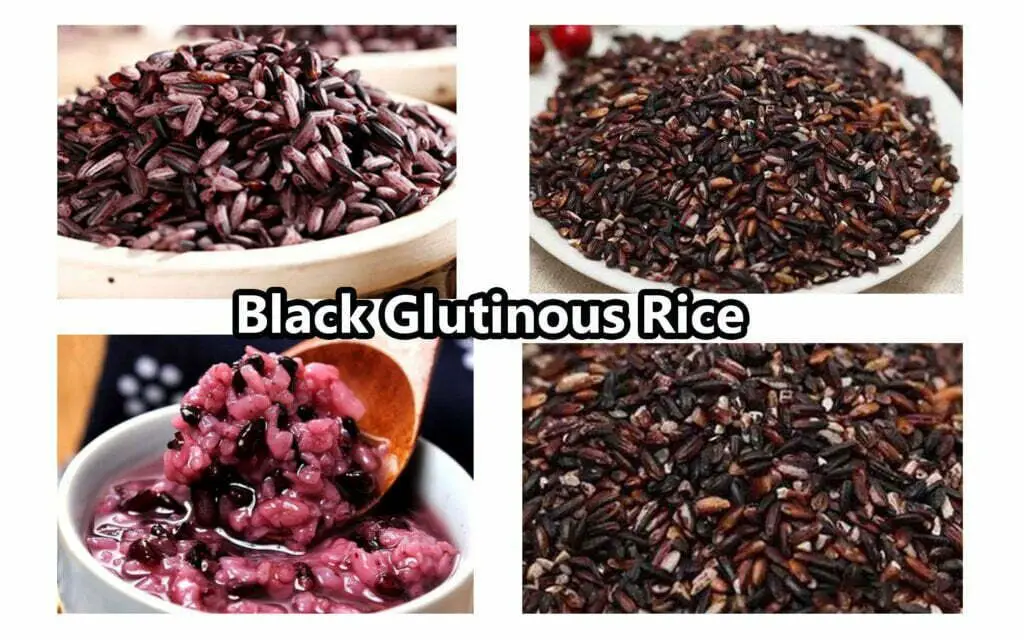
Black glutinous rice has a purple-red seed coat around the seed. The reason why this rice is called “glutinous rice” is because of its waxy nature.
Once the natural black glutinous rice is soaked in warm water, the seed coat’s red pigment gradually dissolves into the water. The longer it is soaked, the more intense the redness of the water. After cooking, the red seed coat separates from the seed.
How to identify fake black glutinous rice in the market
One of the main risks present is the low-quality fake black glutinous rice in the market. So, how can you identify this fake rice? Here are three facts to identify fake black glutinous rice.
- When the rice soaks in water, it quickly turns red.
- Fake black glutinous rice takes on the original shape of white rice after being washed several times.
- You can’t find a red seed coat after the rice is cooked.
What is black rice and how to identify
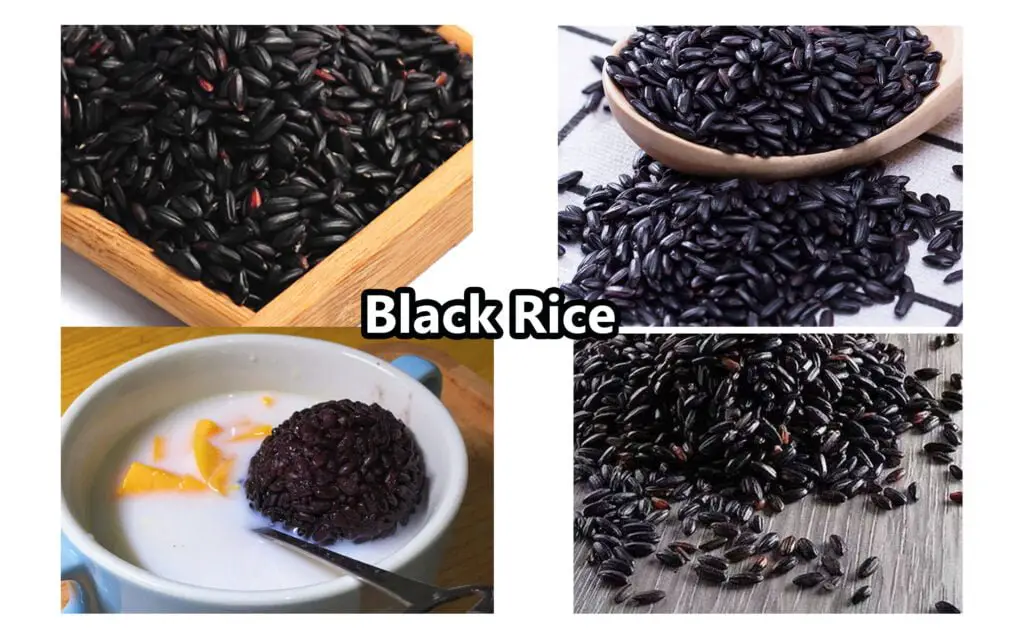
Black rice is a kind of high-quality rice named forbidden rice in ancient China. It is commonly used as a food but can also be used as a medicine. Black rice is a unique variety that has evolved through long-term cultivation.
There are two main types of black rice. First is divided into Indica and japonica. The second is divided into waxy and non-waxy. The color of black rice is black or dark brown, and it is shiny. All the seeds are of uniform size. You can see there are a few broken rice and cracks on the rice grain.
Distinguish between low-quality black rice
Sometimes, you may find low-quality black rice in the market. So how do you identify them. Here are a few points that you can check out.
- The color becomes dull.
- The size of the grains is unequal.
- Grains have poor plumpness.
- There is much-broken rice that can see.
- Insects and debris can see.
What is purple rice and how to identify
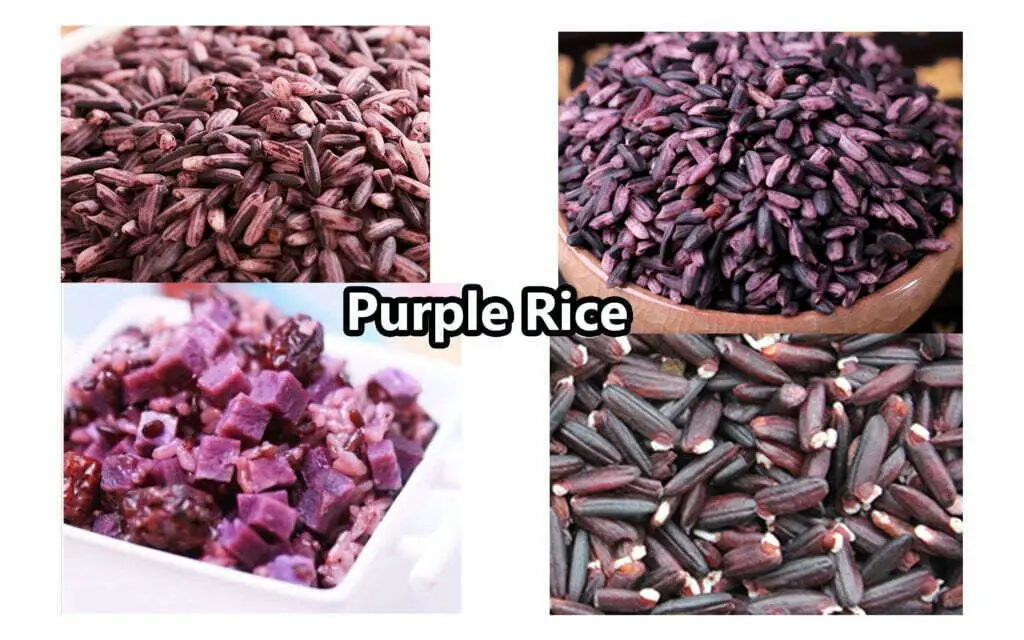
There are two kinds of purple rice.
- The skin is purple, and the inside is white.
- The surface is purple and glutinous.
The main color of purple rice is shiny dark purple, which is close to the black rice’s color. But it is lighter than black rice. It is highly fragrant. The purple rice grains are slender and uniform.
After washing purple rice, the water turns black. You can see purple-black color in the fingers when grasping with the hand. When you scrape off the color blocks on the rice grains with a nail, the rice grains appear purple and white.
Black glutinous rice nutrition facts
- Black glutinous rice is rich in nutrients. It contains protein, vitamins, and various amino acids, and it can satisfy the human body’s nutritional needs.
- The protein content of black glutinous rice is much higher than that of other rice or steam rice.
- It can moisten the intestines. In addition, it contains rich cellulose, which can promote the peristalsis of the intestinal tract.
- Black glutinous rice helps the human body to expel toxins and defecation.
- It has a particular effect on the prevention of intestinal cancer or arteriosclerosis.
- It can warm the stomach and stimulate the spleen.
- It also has a specific healing impact on poor appetite or diarrhea.
- It can also refresh blood.
- Black glutinous rice has a beautify the skin. It is beneficial for women.
- Black glutinous rice is high in calcium and has the effect of strengthening bones and teeth.
- Eating black glutinous rice porridge helps breastfeeding mothers nourish postpartum ailments and helps increase breast milk.
- Frequent eating of black glutinous rice can also nourish the kidneys.
People who should be careful when eating black glutinous rice
People with high heat and phlegm
Do not eat black glutinous rice if you have a fever, cough, jaundice, or diarrhea. When you have a fever, your gastrointestinal tract is in a state of restraint. Therefore, you should eat more liquid food, which is easy to digest. Otherwise, it will increase the disease.
People with poor digestion after an illness
People with poor digestion after illness should avoid eating black glutinous rice cakes. In this case, the patient’s appetite is increased, but the digestive function is weak. In addition, excessive consumption of rice can interfere with healing.
People who have diabetics
If you have diabetes, you should avoid eating polysaccharide foods. For example, rice is converted into glucose in the body. Therefore, be especially careful when consuming glutinous rice as it contains sugar.
People with gastrointestinal diseases
Glutinous rice contains plant fiber, and eating more will increase the gastrointestinal load. If you suffer from stomach ailments or ulcers, avoid eating glutinous rice. Or it can cause internal holes and bleeding.
Older people and children
Glutinous rice is sticky. If older people and children overeat black rice, it is straightforward to cause indigestion. Also, it will result in excessive gastric acid, abdominal distension, abdominal pain, diarrhea, and other symptoms.

